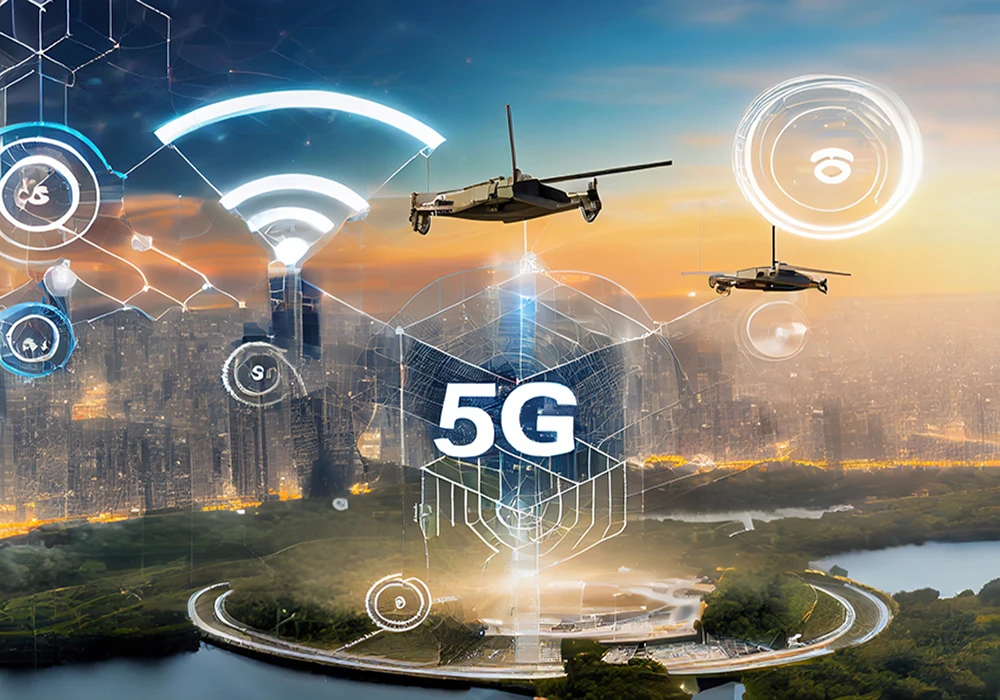How 5G is Transforming Military Communications and Capabilities
Category: Smart Defence Technologies
In the pursuit of achieving unprecedented speed, connectivity, and data transfer capabilities, the integration of 5G technology has become a transformative force within military operations. This article explores how the deployment of 5G is revolutionizing the way armed forces communicate, strategize, and execute missions, ushering in a new era of efficiency and effectiveness in the modern battlefield.
1. Unparalleled Connectivity: 5G’s Quantum Leap in Communication
- Dive into the enhanced connectivity offered by 5G networks, providing military personnel with high-speed, low-latency communication capabilities. Explore how this leap in connectivity is fostering real-time data exchange, enabling rapid decision-making and response in dynamic operational environments.
2. Network Slicing: Tailoring Networks for Diverse Military Needs
- Explore the concept of network slicing, a unique feature of 5G technology that allows military operators to customize virtual networks for specific applications. Discuss how this flexibility supports diverse military requirements, from mission-critical communications to the connectivity needs of unmanned systems and autonomous vehicles.
3. Edge Computing in Military Deployments: Reducing Latency
- Investigate how 5G’s integration with edge computing is reducing latency in military operations. Discuss the advantages of processing data closer to the point of collection, enhancing the efficiency of applications such as real-time surveillance, autonomous vehicles, and augmented reality systems on the battlefield.
4. Enhanced Command and Control: 5G’s Impact on Military Decision-Making
- Examine the role of 5G in transforming command and control structures, facilitating seamless coordination between dispersed military units. Discuss how the high bandwidth and low latency of 5G networks enable commanders to access and analyze real-time data, enhancing their situational awareness and decision-making capabilities.
5. The Internet of Military Things (IoMT): Enabling Interconnected Systems
- Explore how 5G is catalyzing the growth of the Internet of Military Things (IoMT), connecting a multitude of sensors, devices, and platforms on the battlefield. Discuss the advantages of this interconnected ecosystem, from logistics optimization to the integration of smart surveillance systems and autonomous drones.
Case Study 1: U.S. Department of Defense and 5G Innovation
Overview:
- The U.S. Department of Defense (DoD) has been at the forefront of leveraging 5G technology to enhance military operations and capabilities
Implementation:
- The DoD initiated several pilot projects to integrate 5G into military environments. One notable project involves the establishment of a 5G-enabled smart warehouse at Naval Base Coronado in California. The warehouse utilizes 5G connectivity to enable real-time tracking and management of inventory using Internet of Things (IoT) devices. The deployment of 5G facilitates efficient logistics, inventory control, and supply chain management, showcasing the potential of 5G in enhancing military infrastructure and operations.
Results:
- The implementation of 5G in the smart warehouse project has demonstrated improved efficiency in logistics and inventory management. Real-time connectivity allows for instant updates on inventory status, reducing delays and optimizing resource utilization. The success of this initiative highlights the practical benefits of 5G in transforming military logistics and lays the foundation for broader integration in various defense applications.
Case Study 2: South Korea’s 5G-Powered Smart Military Base
Overview:
- South Korea has embraced 5G technology to establish a smart military base, showcasing the potential of 5G in enhancing command and control capabilities.
Implementation:
- The South Korean military has integrated 5G connectivity into a military base to create a smart environment. This includes deploying 5G-connected surveillance cameras, IoT sensors, and augmented reality (AR) applications. The smart military base leverages 5G’s low latency and high bandwidth to enable real-time video streaming, data analytics, and AR-assisted training exercises. The integration of 5G enhances situational awareness, accelerates decision-making, and improves overall operational efficiency.
Results:
- The 5G-powered smart military base in South Korea has demonstrated advancements in command and control capabilities. The use of 5G facilitates seamless communication, real-time data analysis, and enhanced training experiences through AR applications. This case study exemplifies how 5G contributes to modernizing military infrastructure and operations, ultimately strengthening national defense capabilities.

